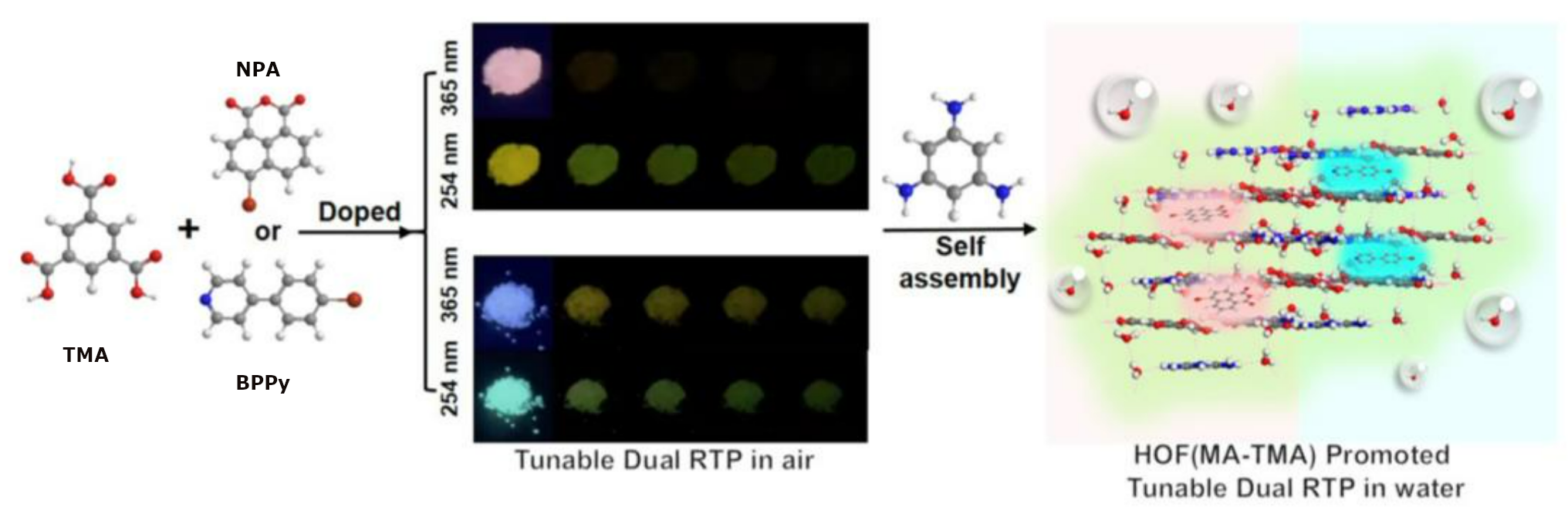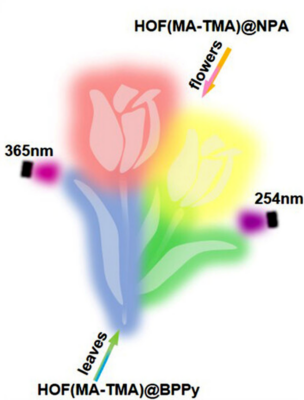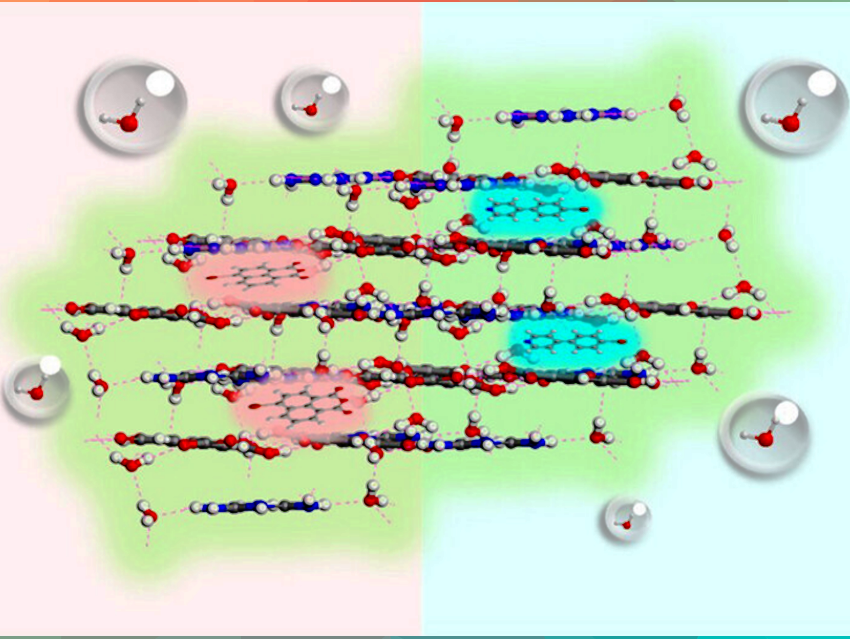Materials that show persistent emission with multi-dimensional and dynamic color displays are advancing rapidly in various scientific fields. However, the presence of water and oxygen significantly impacts the performance of materials that emit through Room Temperature Phosphorescence (RTP), thereby limiting their potential applications. Overcoming this challenge and achieving tunable multi-emissive RTP in a water-based system remains a challenge.
Hydrogen-bonded organic frameworks (HOFs) possess advantageous hydrogen bonding capabilities and offer diverse and adjustable rigid structures. These characteristics make HOFs promising host materials for promoting RTP.
Ming-Xue Wu, College of Chemistry and Chemical Engineering, Qingdao University, China, and colleagues have developed a progressive assembly strategy that involves doping and phosphorescent HOF-based self-assembly. This strategy enables the creation of tunable multi-emissive RTP in water.
Trimesic acid (TMA), known for its RTP properties and rich hydrogen bonding sites, was chosen as the fundamental building block (pictured below). The team then incorporated organic phosphors such as 4-bromo-1,8-naphthalic anhydride (NPA) into TMA, resulting in TMA+phosphors. This doping enhanced the RTP emission of phosphors while maintaining the phosphorescence of TMA. Furthermore, they introduced melamine (MA) into the binary TMA+phosphors system, leading to the creationof phosphorescent HOF(MA-TMA)@phosphors through in-situ assembly. This formation provided a hydrogen-bonded network shield that preserves the rigidity of the phosphors, preventing nonradiative transitions and promoting RTP emission in water.
HOF(MA-TMA)@phosphors also facilitates the regulation of phosphorescence in water. The hydrogen-bonded network structure maintaines the stability of the phosphors, enabling dual RTP emission from HOF(MA-TMA) and the guest phosphors. Moreover, the RTP materials of HOF(MA-TMA)@phosphors show high stability in water, thanks to the ordered and dense hydrogen-bonded network structure that resisted water interference.

Moreover, these RTP materials can be easily processed into luminescent films by mixing them with polydimethylsiloxane (PDMS). They show promising potential in encryption and anti-counterfeiting applications due to the presence of two phosphorescent light sources: the phosphorescent HOF(MA-TMA) host and the phosphor guest. These sources induce different luminescent colors and durations when excited by 365 nm and 254 nm, respectively. (pictured below)

- Smart phosphorescence from solid to water through progressive assembly strategy based on dual phosphorescent sources,
Qing-Qing Xia, Xing-Huo Wang, Jia-Lin Yu, Zhong-Yuan Chen, Xin-Yue Lou, Xiaomin Liu, Ming-Xue Wu, Ying-Wei Yang,
Aggregate 2023.
https://doi.org/10.1002/agt2.370




